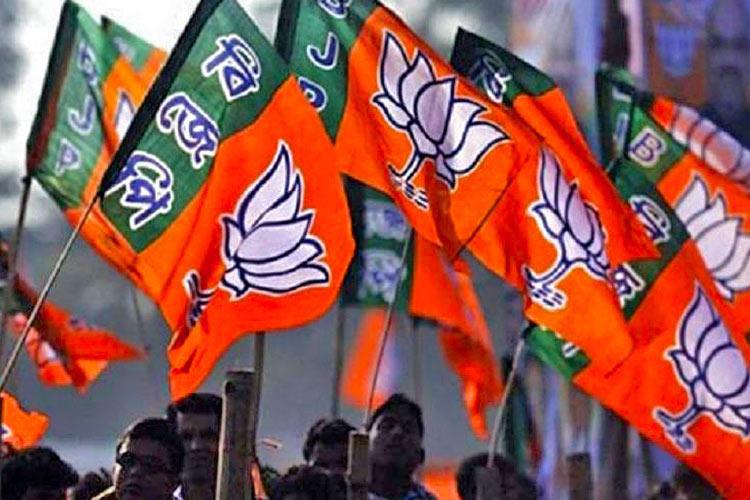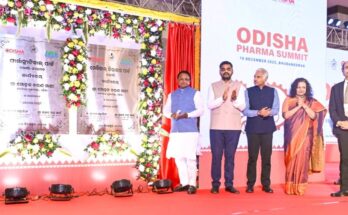By Nirendra Dev
Change is the law of Nature!
Amid hyped debate on whether the BJP would succeed in bringing in a saffron surge in eastern India ? especially in Odisha and West Bengal ? statistics reveal two decades back, the saffron party had first tasted electoral success in three eastern states along with its allies.
Picking up 36.63 per cent votes, the saffron alliance – BJP along with Trinamool, Biju Janata Dal and Samata Party – in 1998 general elections turned out to be the biggest vote catcher in eastern India recording a combined swing of 18 per cent.
Truly, the alliance making has always helped BJP. As the country’s politics since 1989 polls entered into the coalition course, the saffron outfit expanded its base substantially.
So much is the irony about coalition politics that while in 1998, Trinamool Congress of Mamata Banerjee and Naveen Patnaik-led Biju Janata Dal (BJD) were its allies, in circa 2019 ? both these parties are its chief rivals today and the optimists among BJP leaders and supporters feel ousting both Mamata Banerjee-led Trinamool and Naveen’s BJD from the respective seats of power in the states too is ‘doable’.
In Bihar, the twist has been interesting. While Nitish Kumar had walked out of NDA in 2013, the JD(U) is back in the saffron fold.
Leading the pack of allies was BJP with 17.99 per cent in the entire east and north east with an upswing of 4.65 points, statistics further reveal that pro-BJP swings in 1998 polls ranged from 3.23 per cent in West Bengal and 3.49 per cent in Bihar and as much as 7.78 per cent in Odisha.
The ‘saffron alliance’ had registered an upswing of 35.27 per cent in Odisha making the highest pickings of total 16 states. This marked a new era for Naveen Patnaik, who had floated a party in the name of his father Biji Janata Dal (BJD).
From West Bengal, the alliance had picked up eight seats ? including one for BJP whole in Bihar (along with Samata Party of George Fernandes and Nitish Kumar), the alliance had six new seats.
However, in 1998, the divided United Front (comprising Janata Dal, AGP and others) turned out to be the worst loser in east. As many as 33 seats were lost out and the Congress-led alliance along with RJD had across the broad picked up 42 seats.
The Congress share of seats from east was 24 seats, but it also lost deposits in 39. Overall, the BJP picked up 29 seats and lost deposits in 11 from the total 77 seats it fielded own candidates in east.
The big picture message from 1998 elections ? was “at long last” the BJP recorded successes in three crucial states of united Bihar, West Bengal and Odisha. In the north east though there was no significant gains in number of seats, the saffron party nominees could make their presence felt.
However, a notable feature of 1998 election was Janata Dal’s big failure as only Ram Vilas Paswan could make it to the Lok Sabha from Hajipur in Bihar.
Janata Dal had lost as many as 44 seats.
The regional outfit AGP in Assam and also a constituent of National Front under V P Singh and later under United Front in 1996-98 could not win a single seat. The AGP’s vote share plunged from 27.04 per cent to 12.72 per cent and it lost all five seats it contested.
In the northeast, showing much promise for the first time, the BJP vote share shot up to 19.27 even as it did not field candidates in Nagaland, Sikkim and Manipur. BJP won one seat in Assam.
The Congress had finished at the top with 13 of the 25 seats.
In fact, the UF politics ? that comprised JD, AGP, Samajwadi Party and Left parties changed drastically since then.
In 1999 Lok Sabha polls ? after the Vajpayee government fell by one vote ? Mr Paswan and Sharad Yadav joined George Fernandes-led JD(U) (Samata Part also merged with it). All three stalwarts from Bihar and also Nitish Kumar later in 1999 October became Ministers in NDA-2.
But after 2002 Gujarat riots, Mr Paswan (then having floated LJP) quit NDA.
Naveen Patnaik stuck to NDA for a while but deserted the BJP-led camp in 2009 elections and by then even Mamata Banerjee-led Trinamool Congress had charted its own ‘individual’ and so called ‘ekla chalo’ road map to successfully unseat Leftists in Bengal in 2011.




